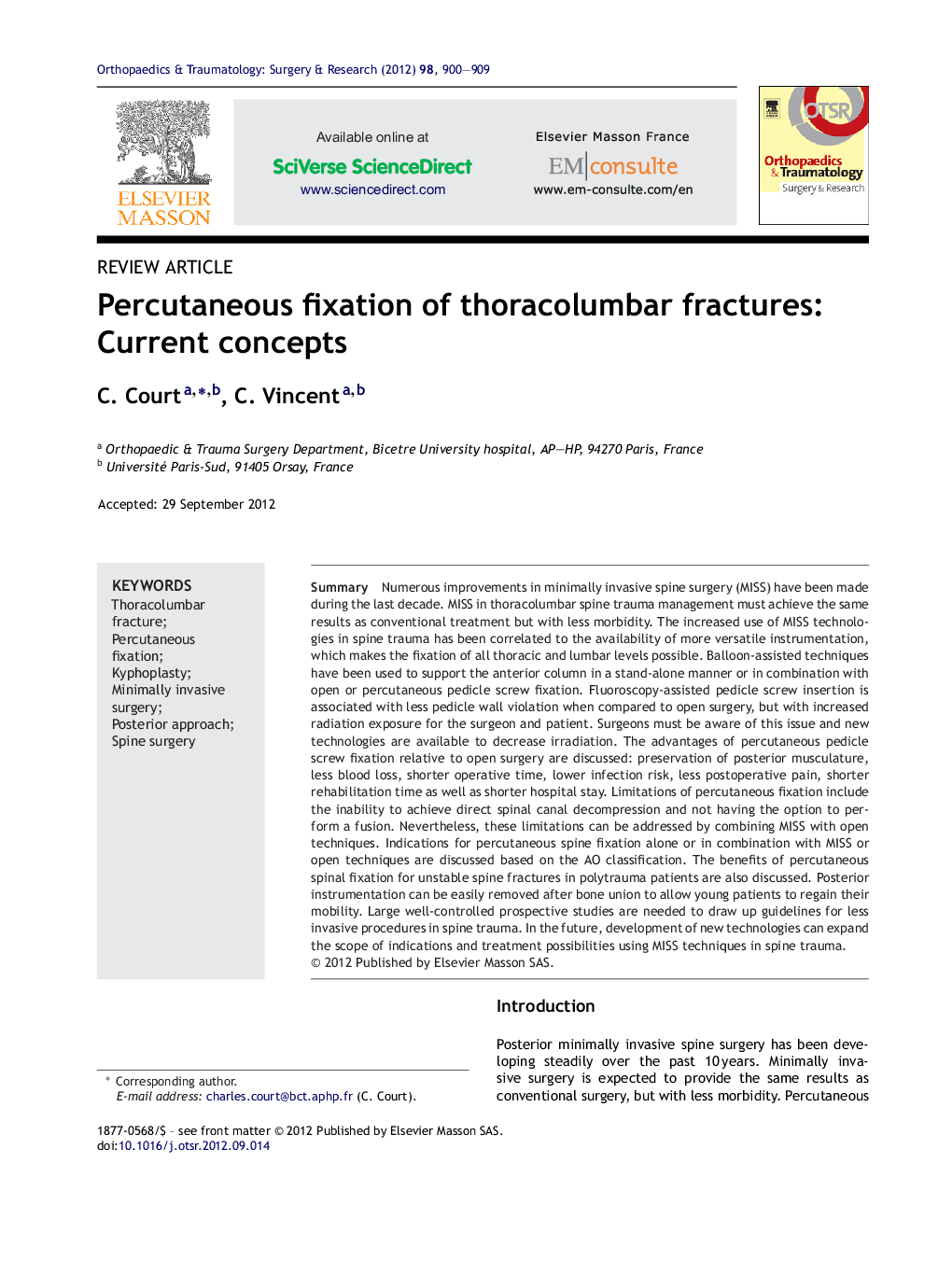| Article ID | Journal | Published Year | Pages | File Type |
|---|---|---|---|---|
| 4081954 | Orthopaedics & Traumatology: Surgery & Research | 2012 | 10 Pages |
SummaryNumerous improvements in minimally invasive spine surgery (MISS) have been made during the last decade. MISS in thoracolumbar spine trauma management must achieve the same results as conventional treatment but with less morbidity. The increased use of MISS technologies in spine trauma has been correlated to the availability of more versatile instrumentation, which makes the fixation of all thoracic and lumbar levels possible. Balloon-assisted techniques have been used to support the anterior column in a stand-alone manner or in combination with open or percutaneous pedicle screw fixation. Fluoroscopy-assisted pedicle screw insertion is associated with less pedicle wall violation when compared to open surgery, but with increased radiation exposure for the surgeon and patient. Surgeons must be aware of this issue and new technologies are available to decrease irradiation. The advantages of percutaneous pedicle screw fixation relative to open surgery are discussed: preservation of posterior musculature, less blood loss, shorter operative time, lower infection risk, less postoperative pain, shorter rehabilitation time as well as shorter hospital stay. Limitations of percutaneous fixation include the inability to achieve direct spinal canal decompression and not having the option to perform a fusion. Nevertheless, these limitations can be addressed by combining MISS with open techniques. Indications for percutaneous spine fixation alone or in combination with MISS or open techniques are discussed based on the AO classification. The benefits of percutaneous spinal fixation for unstable spine fractures in polytrauma patients are also discussed. Posterior instrumentation can be easily removed after bone union to allow young patients to regain their mobility. Large well-controlled prospective studies are needed to draw up guidelines for less invasive procedures in spine trauma. In the future, development of new technologies can expand the scope of indications and treatment possibilities using MISS techniques in spine trauma.
